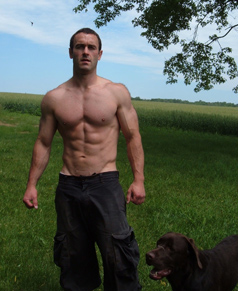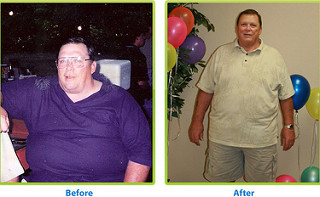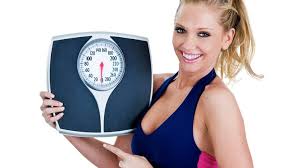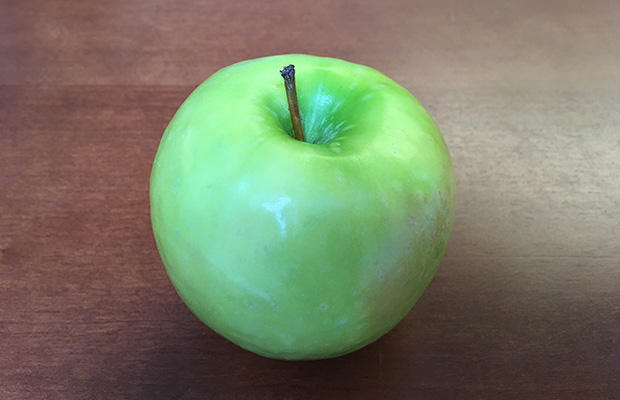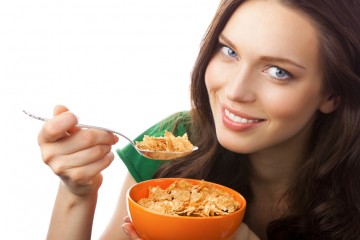How to Choose Weight Loss Snacks
Many people who are trying to lose weight and are following a diet may think that "snacks" are out of the question. Snacks generally have a bad reputation of being high in calories, sugar, fat or salt. However, not all snacks are unhealthy. In fact when properly planned, many snacks can actually be beneficial to your diet. They can add an extra shot of nutrition to your day, give you a boost of energy and keep your hunger and appetite in check throughout the day.[1] Use snacks wisely throughout the day to help support your weight loss.
Steps
Part 1 Choosing the Best Snacks for Weight Loss
-
1
Keep calories in check. One of the biggest mistakes people can make when snacking on a diet or weight loss plan is letting the total calories get too high. This can lead to weight gain or a weight plateau.[2]
- Keep snacks to 150 calories or less per snack.[3] This calorie level can allow snacks to fit seamlessly into a calorie restricted diet.
- To ensure you're sticking to 150 calories or less, always measure portions of your foods and keep track of their calorie content. Guesstimating portions or calories leaves you open for a lot of mistakes.
- Even though you want to keep calories restricted for snacks, 150 calories provides enough room to include a variety of nutrients to help keep your hunger in check.
-
2
Always include lean protein. Including lean protein should be a number one priority when choosing a snack while you're attempting to lose weight.
- Protein is an essential nutrient for weight loss. When included in your snack, lean protein helps keep you more satisfied compared to carbohydrates or fat.[4]
- Aim for leaner sources of protein at snack time. These types of protein have less calories and fat and are the best options when calories are limited.[5]
- Choose lean protein foods like: a hard boiled egg, low-sodium jerky, a low-fat yogurt or cottage cheese cup, low-fat cheese stick, low-sodium deli meat or roasted nuts. You can make a trail mix, deli meat and cheese roll ups, greek yogurt sprinkled with cinnamon, 3 oz of jerky, whole grain toast with sliced hard boiled egg or celery and peanut butter.
-
3
Add some bulk with a fruit or vegetable. A snack is a perfect place to get in an additional serving of fruits or vegetables. Plus, these foods are low in calorie and can add bulk to your snacks without pushing you over your calorie limit.
- Fruits and vegetables also offer the added benefit of being high in fiber. Fiber, like protein, can help keep you satisfied longer throughout the day.[6]
- Pairing your lean protein with a fruit or a vegetable makes for a nutritious and satisfying snack.
- Try: greek yogurt with fruit, a low-fat cheese stick and an apple or pear, roasted nuts and dried fruit, baby carrots with hummus, whole grain waffle with peanut butter and sliced banana, protein shake with fruit and vegetables blended in, lettuce wrap with chicken salad or deli meat wrapped around raw veggies.
-
4
Go for complex carbs instead of refined carbohydrates. Many typical snack foods are high in refined carbs like white flour or white sugar. Switch to high fiber whole grains for a more complex and satisfying source of carbohydrates.
- 100% whole grains are higher in fiber, protein and other nutrients compared to refined grains. Go for whole grain whenever you can.
- Whole grains to try include: whole grain oats, corn, whole wheat tortillas or wraps, whole wheat bread or quinoa.
- Include whole grains into your snacks like: whole wheat pita chips and carrots with hummus, 1 piece of whole grain toast with smashed avocado and sliced tomatoes, a small bowl of oatmeal with fruit or yogurt with fruit and a sprinkling of granola.
-
5
Try some water first. You may be feeling hungry between meals and have the urge to snack when in reality you may not need food. Sometimes, symptoms of mild dehydration can seem like physical hunger and cue you to eat.[7]
- To be sure your afternoon snack craving isn't just your body sending mixed signals, try to stay well hydrated throughout the day.
- Aim to drink a minimum of 64 oz or 8 glasses of water daily. However, many people need up to 13 glasses daily. The amount will vary based on age, gender and activity level.[8]
- You know you're adequate hydrated if you do not feel thirsty throughout the day and your urine is the color lemonade or very pale yellow by the end of the day.
- If you're dieting and aiming for weight loss choose hydrating fluids without calories. Water, flavored water, sparkling water, decaf coffee and tea are all great options.
-
6
Avoid highly processed snack foods. Choosing low calorie, nutritious snacks food is the best option for including a snack while you're dieting. Highly processed, "junk food" snacks are things that you should avoid.
- Many processed foods and processed snack foods are high in calorie, sugar, fat and salt.[9] These can totally derail your diet or weight loss if eaten regularly or in large quantities.
- Avoid foods like: chips, crackers, candy, cookies, snack cakes or pies, sugary granola or fruit bars or sweetened beverages.
-
7
Avoid empty calorie snacks. There are some snacks (like potato chips or candy) that should obviously be avoided when you're losing weight. However there are some tricky snacks that are low calorie and still should be minimized in your diet.
- Empty calorie snacks or foods are those that contain little to no nutritional value and provide only calories. They are "empty of nutrition."[10]
- There are many snack foods that are marketed as healthy and "good for weight loss" but are still considered empty calories. They are low in calorie but they are also very low in any valuable nutrition.
- Minimize foods like: baked chips, "100 calorie packs", diet cookies, low-calorie popcorn, sugar free candies, sugar free pudding or jello and crackers.
Part 2 Deciding When to Snack
-
1
Wait for your stomach to growl. It's important to make sure you use snacks wisely. One of the best uses for a snack is to keep hunger at a manageable level in-between meals. Only snack if you are truly, physically hungry.
- Your body does a great job at letting you know when you're hunger and whether or not you'll need a snack before your next planned meal.
- Physical hunger should be your guide to whether or not you need to snack. Pay close attention to your body's signals throughout the day to help you decide whether or not to snack.
- Physical hunger feels like an emptiness in your stomach and may come along with stomach pangs and a growling noises.
-
2
Have a small snack before your workout. Another appropriate time to snack (even if you're not overly hungry) is before a long or high intensity workout.[11]
- Your body, especially your muscles, need energy for fuel during workouts. If its been a few hours since your last meal or you haven't eaten yet, a small pre-workout snack will help provide your body with the energy it needs to sustain activity.
- Pre-workout snacks have slightly more specific recommendations compared to a snack used to get you from lunch to dinner. The best type of snack before a workout is carbohydrates which act as an immediate source of fuel for your body.[12]
- Try: a piece of fruit, a small yogurt, a small bowl of oatmeal, a few whole wheat pita chips, smoothie made with yogurt and fruit, apple w peanut butter, a piece of toast or a whole grain mini bagel, fruit leather or a toasted whole grain waffle.
-
3
Snack in between two meals that are far a part. One of the most common reasons to include a snack is to help manage the hunger that can crop up in between meal times.[13]
- Use your snack to curb hunger in between meals. Letting yourself get too hungry between meals may lead to overeating at your next meal time.
- If two meals are more than about 4-5 hours apart, you may need to plan to have a snack to help tie you over to the next meals.
- The combination of a lean protein and a fruit, vegetable or whole grain is the best option to quell hunger and keep you satisfied.
- Try: fruit and yogurt or cottage cheese, trail mix with dried fruit, deli meat and cheese roll-ups, sliced pear with some cheddar cheese, apple and peanut butter, raw vegetables and hummus, whole wheat pita chips with guacamole, protein shake blended with fruit, protein bar and a small piece of fruit, cereal or oatmeal with fruit and tuna salad with raw veggies.
-
4
Avoid snacking if you truly don't need one. Snacks can fit very well into a weight loss diet by managing satiation and nutrition. However, snacking when it's truly not needed may impede weight loss and set up bad habits.
- Don't add snacks, even healthy or low calorie snacks, that will push you over your calorie level for weight loss.
- Don't snack out of boredom. Even if you have the room in your diet for a low calorie snack, eating out of boredom and without hunger is a bad habit to get into in the long-term.
- Also don't sit down with large quantities of snack foods - even if they're healthy. This can lead to mindless eating and overeating (and possibly too many calories).
-
Weight Loss Tips For Staying Young
Life as well all know is all about survival. Life has always been abo
-
Weight Loss Tip #131 – Never go shopping on an empty stomach
-
The Truth About Belly Fat And How To Get Rid Of It
Most people feel that belly fat is unsightly and it can also be
-
Ideas For A Successful Weight Loss Plan
TIP! You do not have to sacrifice flavor to lose weight. In prev
-
Discover 12 Top Quick Weight Loss Tips
Being overweight today is just not the in fashionable look. But when
-
Take 1 Cup Of THIS Daily To Melt Away Your Stomach Fat
With 2015 coming to a close, you’ve probably been thinking abo
- DON'T MISS
- Mindful Awareness Of Weight Loss Goals.
- Weight Loss Tips That Will Slim You Down
- Healthy Weight Loss Advice - The Importance Of A Good Nights Sleep
- What to eat and when
- Study Finds What Exactly Promotes Weight Gain
- How to Balance a Meal
- How to Lose Weight Without Your Parents Knowing
- How to Lose Weight and Stay Healthy With a Disability
- How to Lose Weight With a Simple Diet
- Healthy Meals for Quick Weight Loss
